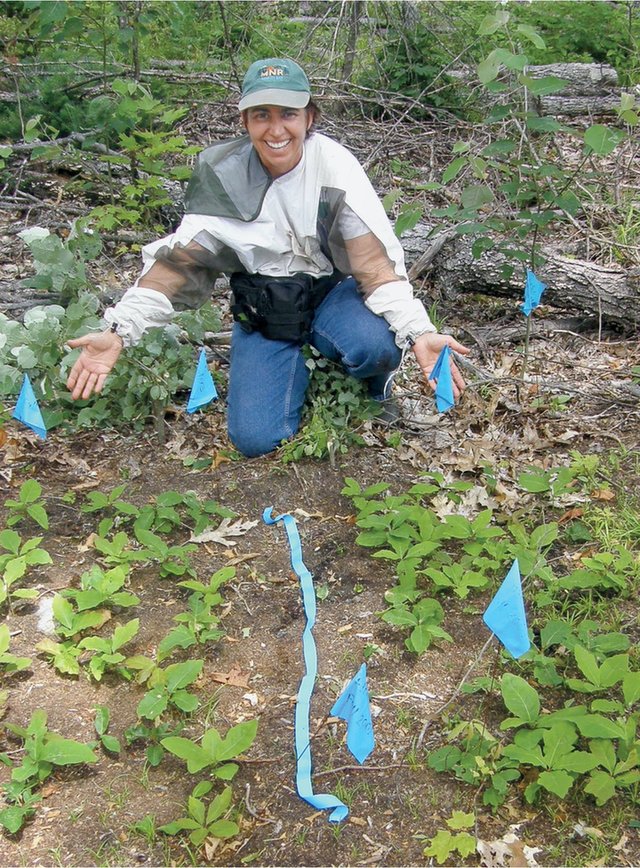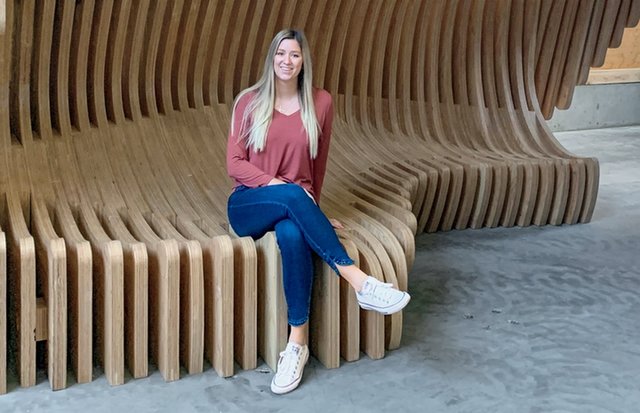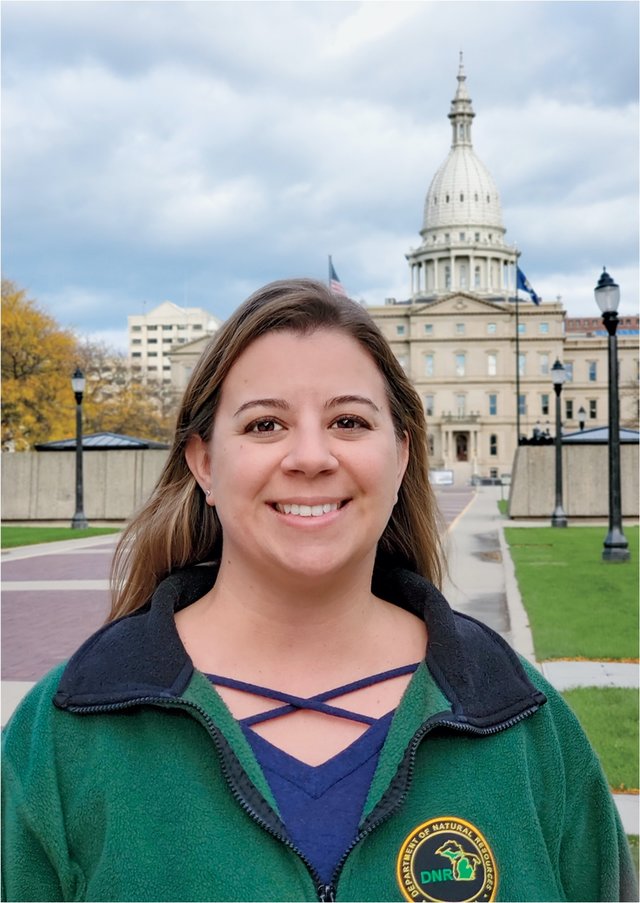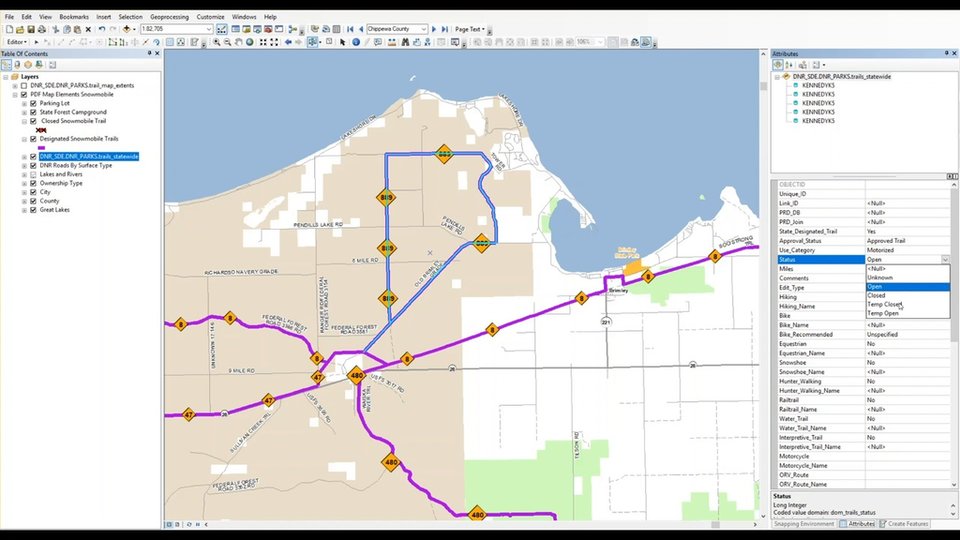AndreeMorneault
Forester
Callander,Ontario, Canada
Iworkwithforesterstohelpmaintain forestland.
WhenIwasyoung,Iwantedtogrowthings.Iwantedtobeafarmer.Today,Igrowtreesinforests.Myjobistomakesurethataforestregrowsafterthetreesareharvested.WhereIwork,weharvestabout3,000hectares(7,410acres)ayear.Togiveyouanideahowmuchthisis,mostsportsfieldsareonehectareinsize.Two-thirdsofthisareagrowsbacknaturallywiththesametreespeciesthatwasgrowingtherebeforetheharvest.Theotherone-thirdneedstobeplanted,andthat’swhereIcome in.
Duringthewinter,Iworkinanoffice.Iplanwhatwe willplantinthesummer,developbudgets,andhirecontractorstodothework.BeginninginMay,Isupervisethetreeplant.Weplantbetween600,000and1,000,000treesperyearduringMay.Imonitorthesurvivalandgrowthofthesenewtreesandofthetreesalreadythere.Forestryisacomplicatedscience.Itrequiresknowledgeinawidevarietyofdisciplines.Ilikeusingsciencetounderstandhowtheforestandeverythinginit grows.

AndreeMorneaultshowssomenewlyplanted trees.
Forestryalsorequiresapersontothinklong-term.Ittakesabout80yearsbeforemanytreesarelargeenoughtoharvestagain.IwillnevergettoseethetreesthatIplanttodaybecometheforestsoftomorrow.ButIknowthatI'mgivingthemagood start.
KimKennedy
GISResource Specialist
Lansing, Michigan
Ilovemaps!Iworkwithcomputerstocreategraphsandmapsshowingdata,suchaslanduse,treecover,andenvironmental practices.
GISstandsforgeographicinformationscience,whichincludesmapmakingandglobalpositioningsystems(GPS).Theseareusedtovisualizeanddescribethelocationofthingson Earth.
Myfocusismappingtrails.InMichigan,therearemorethan19,300kilometers(12,000miles)oftrails.Michiganhasmanydifferenttypesoftrailsusedforhiking,bicycling,horseriding,skiing,snowmobiling,andoff-roadvehicleriding.ThetrailsarescatteredacrossMichiganonstateandnationalforestland,stateparks,andstaterecreation areas.
TheworkIdoisimportantforrecreation,resourcemanagement,andtrailmaintenance.Peoplewhowanttousethetrailsneedtoknowwheretrailsarelocated.Knowingwherethetrailsarealsohelpsforestmanagersworkduringtreeharvestingandothertypesofforestwork.Planningfornewtrailsorconnectingexistingtrailsisanotherwaythatmappingisimportant.Everyday,myjobbringssomething different!
KendallConroy
WoodBuilding Design Consultant
Portland, Oregon
Ipromotesustainableconstructionthroughtheuseof wood.
Ihelparchitectsandengineersbuildwithwood.Iencouragethemtousewoodproductsintheirbuildings,becausewoodisoneofouronlytrulyrenewableresources.Producingwoodbuildingmaterialsisalsomoreenvironmentallyfriendlythanproducingotherbuildingmaterials,likesteelandconcrete.Imakesurebuildersareusingtherightproductsfortherightjobandthattheyaredoingit sustainably.

IknowthatI’mmakingadifference.Helpingturnjustonebuildingthesizeofaschoolfromasteelandconcretedesignintoawooddesigncanpreventmorethan10,000metrictons(2,200pounds)ofcarbondioxidefrombeingreleasedintothe atmosphere.
Woodproductsareeasytouse,they’recost-effective,andtheytrapcarboninsteadofreleasingit.SinceourbuildingsandtheiroperationsaccountforalmosthalfoftheUnitedStates’carbonemissions,thisisaplacewherechangecanmakeabig impact.

